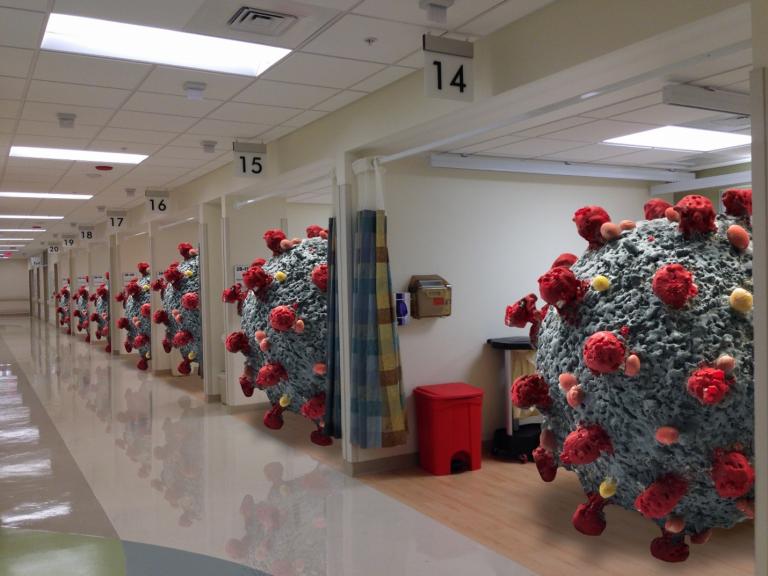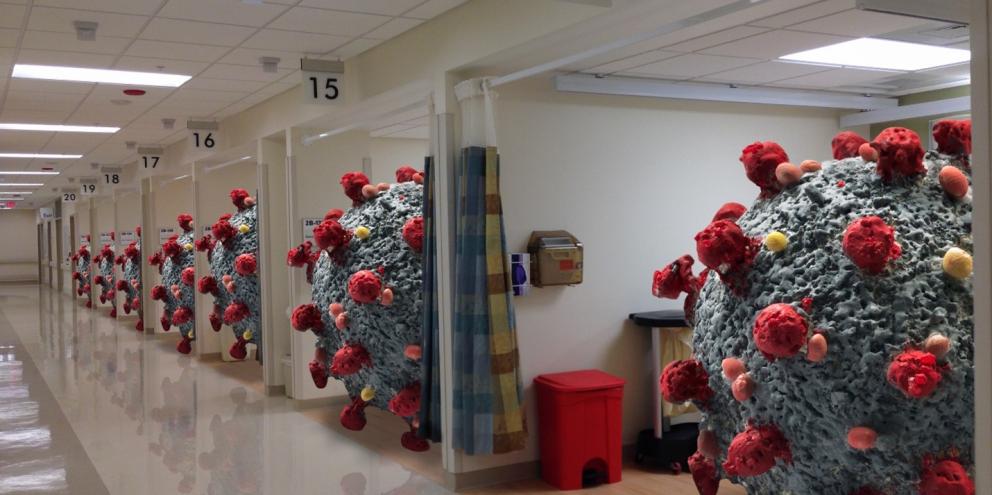
However, as hospitals across the world have seen a surge in COVID-19 patients suffering from acute respiratory distress syndrome (ARDS), a debate has emerged as to whether ARDS due to the virus is clinically similar to other forms of ARDS. Because of this debate, there has been no universal agreement on how to best manage these patients, including optimal oxygenation and ventilation strategies to reduce the risk of additional lung injury and complications1.
In this article, we’ll discuss the potential difference between traditional ARDS and COVID acute respiratory distress syndrome (CARDS), as well as the different COVID-19 phenotypes that result in these variations. We’ll also lay out recommendations on the most effective use of respiratory treatments from leading physicians and expert panels.
Comparing traditional ARDS to CARDS
ARDS related to COVID-19 differs from ARDS due to other causes in that patients present with extreme hypoxemia, accompanied by a wide range of respiratory compliance1.
Luciano Gattinoni, MD, FRCP and colleagues described this phenomenon in a case series of 16 mechanically ventilated patients with COVID-192. Their findings included severe hypoxemia despite relatively normal lung compliance. This is a finding which is unusual in traditional ARDS. Blood gases and CT scans exposed a large shunt fraction in the presence of relatively small amounts of gasless tissue in 50% of patients, pointing to hyperperfusion of poorly ventilated lung regions.
Additionally, Gattinoni et al. in an editorial, “The baby lung and the COVID-19 era”, point out that while the model of the baby lung, which was born when analysis of CT scans demonstrated that the amount of ventilatable lung tissue in an adult patient with severe ARDS is approximately that of a six-year old child, in many cases is not born out since COVID-19 may present as an atypical ARDS3.
In fact, instead of presenting as a baby lung, this atypical presentation shows an “adult lung” with normal mechanics and specific compliance. Whether due to disease progression alone or as a result of improper treatment and patient self-inflicted lung injury, Gattinoni proposed that this adult lung may then progressively shrink and deteriorate through a sort of “ventilator-induced lung injury (VILI) vortex”. This reduction to the more expected presentation of the traditional baby lung of ARDS features a parallel decrease in respiratory compliance.
CARDS phenotypes: Measuring compliance, shunt, lung weight and recruitability
Because of these differences, there are two primary phenotypes of CARDS which have been proposed4.
The first, phenotype L, encompasses the atypical presentation seen in CARDS characterized by:
- Low elastance (high compliance)
- Low pulmonary ventilation/perfusion ratio (VA/Q)
- Low lung weight
- Low recruitability (low response to PEEP)
The second type is more consistent with typical severe ARDS and is known as type H, which included:
- High elastance (low compliance)
- High pulmonary ventilation/perfusion ratio (VA/Q)
- High lung weight
- High recruitability (high PEEP response)
Of course, these presentations are opposite ends of a spectrum on which there are intermediate stages in which characteristics may overlap.
The move toward a consensus for CARDS care
Considering the fact that respiratory treatment plays an important role in determining outcome, including mortality, creating a consensus for optimal care for patients suffering from CARDS is a must.
Such a consensus was the goal of Nasa et al., who gathered an international panel of 39 experts to develop clinical practice statements for the treatment of COVID-19 patients1.
A handful of the twenty-seven statements with large agreement that were generated include:
- Awake self-proning may improve oxygenation when used in patients with COVID-19 Acute Respiratory Failure (C-ARF) requiring supplemental oxygen to maintain oxygen saturation (SpO2) > 90%.
- High Flow Nasal Oxygen (HFNO) therapy should be considered as an alternative strategy for oxygen support.
- Non‑invasive ventilation and continuous positive airway pressure (CPAP) should be considered in patients with mixed respiratory failure (hypercapnia and hypoxemia) and may be used in patients with increased work of breathing which is observed subjectively.
- Veno‑Venous extracorporeal membrane oxygenation (V‑V ECMO) may be considered in patients with refractory hypoxemia who do not respond to other adjuvant therapies
- Lung protective ventilation (LPV) should be used for patients with C-ARF on Invasive Mechanical Ventilation (IMV).
- Prone ventilation should be used for a duration of 16–24 hours per session to improve oxygenation.
Personalizing medicine through CARDS ventilation strategies
However, these recommendations still did not address the need for different respiratory approaches depending on the underlying physiology – an issue which can be corrected by once again turning to the work of Gattinoni and colleagues.
Their work produced respiratory management recommendations based on type L phenotype as follows4,5:
- Mode: Volume Controlled Ventilation
- FiO2: high as needed
- Tidal Volume: even > than 6 ml/kg
- Respiratory rate: try < 20 bpm
- PEEP: 8-10 cmH2O
- Prone position: only as a rescue
In these high compliance patients (> 50 ml/cmH2O) the plateau, driving pressure and mechanical power levels are well below the traditional severe ARDS5.
For type H, recommendations include:
- Mode: Volume Controlled Ventilation
- FiO2: high as needed
- Tidal Volume: possibly 6 ml/kg
- Respiratory rate: to stay < 60 mmHg PaCO2
- PEEP: possibly < 15 cmH2O
- Prone position: daily
In these low compliance patients (< 50 ml/cmH2O) the plateau, driving pressure and mechanical power levels are the same as that seen in traditional severe ARDS5.
Whichever the disease type, Gattinoni points out that weaning should be undertaken cautiously as early weaning is problematic due to the length of the COVID-19 disease process.
Summary
- As the COVID-19 pandemic may continue to see high volumes of patients admitted to ICU, the development of optimal respiratory management strategies may play a critical role in saving lives.
- CARDS may differ from traditional ARDS, presenting with severe hypoxemia despite relatively normal lung compliance.
- COVID-19 patients can be categorized into one of the 2 proposed COVID-19 phenotypes (type L or type H).
- Personalizing the respiratory approach based on underlying physiology may more appropriately address the variations in compliance, perfusion and recruitability between phenotypes.
References:
1. Nasa, Prashant et al. “Expert consensus statements for the management of COVID-19-related acute respiratory failure using a Delphi method.” Critical Care Vol. 25 Issue 106 (2021).
2. Fan, Eddy et al. “COVID-19-associated acute respiratory distress syndrome: is a different approach to management warranted?” Lancet Respiratory Medicine Vol. 8 (2020): Pages 816-21.
3. Gattinoni, L., Meissner, K. & Marini, J.J. “The baby lung and the COVID-19 era.” Intensive Care Med Vol. 46 (2020): Page 1438-1440. https://doi.org/10.1007/s00134-020-06103-5.
4. Marini, J.J, Gattinoni, L. “Management of COVID-19 Respiratory Distress.” JAMA Vol. 323 Issue 22 (2020): Pages 2239-2230.
5. Gattinoni, Luciano. COVID-19 pneumonia: Time course, monitoring and treatment. 2020. Webinar.
© GE, 2022 – All rights reserved.
GE and the GE Monogram are trademarks of GE. Reproduction in any form is forbidden without prior written permission from GE. Nothing in this material should be used to diagnose or treat any disease or condition. Readers must consult a healthcare professional. JB18751XX








